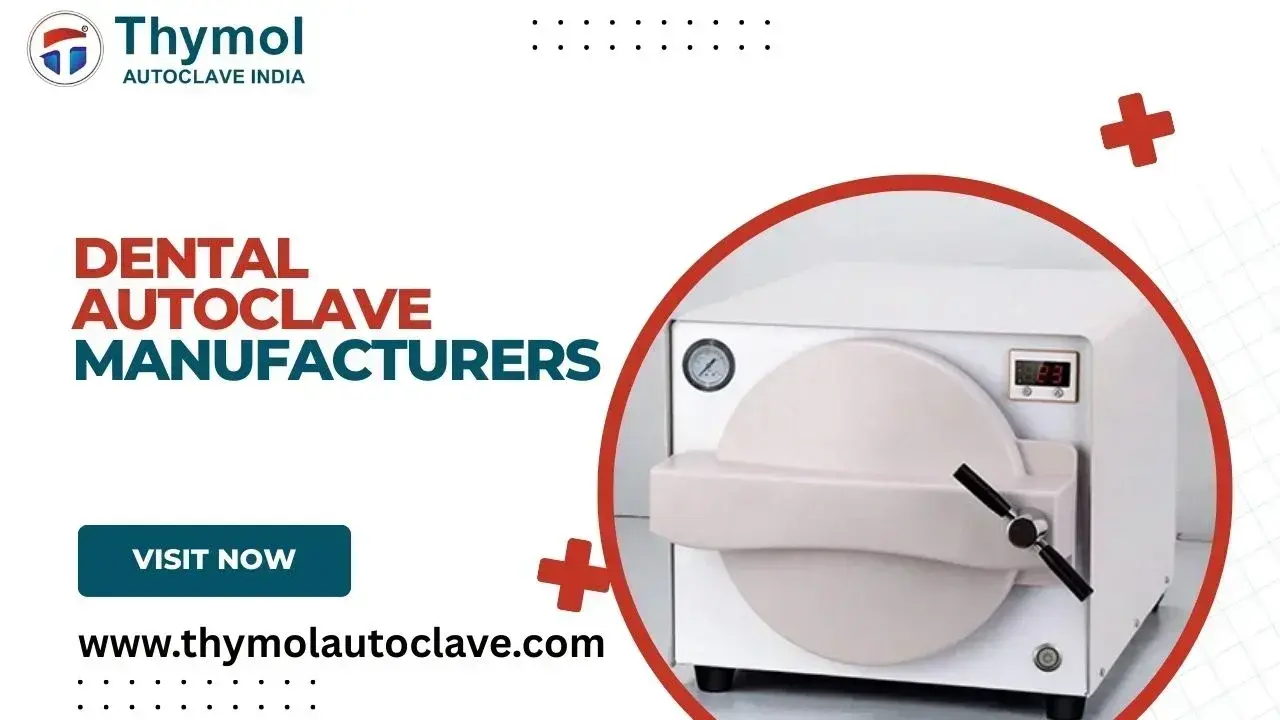


Chamber capacity is the capacity of the autoclave that determines how much load can be kept in the chamber.
If you are a dentist running a dental clinic or employed at a large hospital, you need a dental autoclave. Sterilization is a crucial aspect of dentistry, whether it is performed on a small scale in a clinic or a Central Sterile Supply Department (CSSD) lab within a large healthcare facility. You might be aware of how critical it is to follow the hygiene standards. Using unsterilized dental equipment is a sign of poor hygiene because it risks patient safety as well as those who work in these places. So, choosing the right one from the list of reputed dental autoclave manufacturers becomes essential. In this blog, we will guide you in making well-informed decisions in your purchase.
Consider the instrument types regarding the autoclave specifications. Cutting, grasping, dental probes, surgical instruments, trays, and syringes are the different types of equipment used. The volume also matters, depending on the scale of operations. In a small clinic, a tabletop autoclave is preferred, while for larger facilities, the floor-standing autoclaves are better suited.
Chamber capacity is the capacity of the autoclave that determines how much load can be kept in the chamber. Ask the dental autoclave manufacturers about their chamber capacity. It should be compatible with the net load that you will need to sterilize. It should be within the range suitable for your loads; otherwise, overloading can lead to incomplete sterilization.
An autoclave is a sophisticated system of components dealing with high pressure and temperature. Therefore, having a safety mechanism is important. These are thermal cut-off when the temperature of the steam reaches the ideal point, a door interlock to maintain pressure inside the chamber, a steam release, and an air exhaust valve.
The interface of the autoclave should clearly indicate essential parameters, which are temperature, pressure, time, and error. This helps the operator to make appropriate decisions and supervise the sterilization process.
After sterilization is complete, the drainage valves should drain out the steam and water automatically. Apart from automated features, the water filters also help in self-cleaning. The chamber should be accessible for cleaning, and the external parts wiped with damp clothes.
By addressing these fundamental questions, one can easily choose the right dental autoclave manufacturers for their instrument sterilization. An autoclave is a complex assembly of many parts; hence, it should be chosen with serious consideration. Compare the load capacity, safety features, the user interface, and other specifications to make sure it fits right with your clinic’s healthcare facility.
